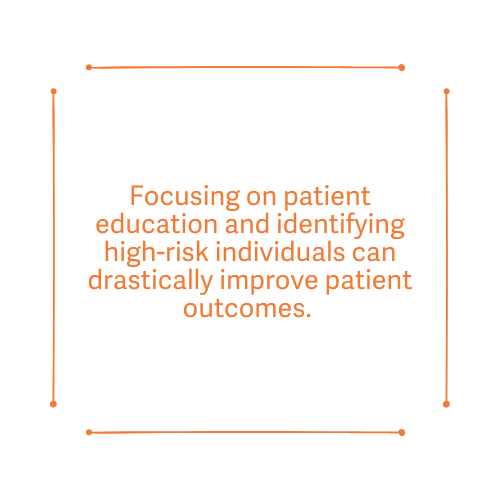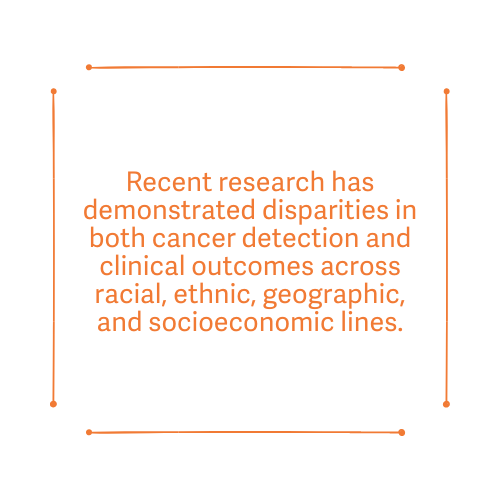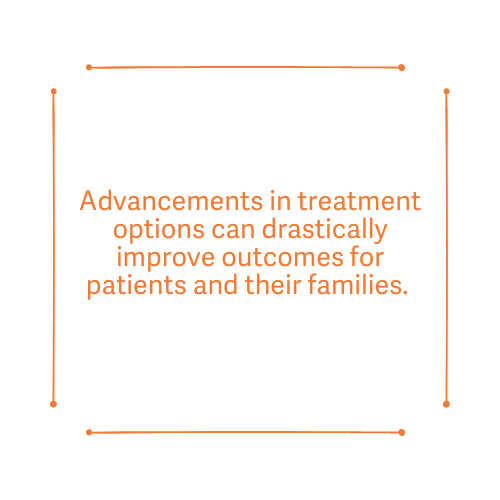
In February 2022, President Biden reignited the Cancer Moonshot, a commitment initially made in 2016. Reminiscent of JFK’s 1961 space program that resulted in landing a man on the moon just eight years later, the Cancer Moonshot’s aim is to put an end to cancer as we know it by reducing the cancer death rate by 50% over the next 25 years and improving the experience for people and their families living with and surviving cancer.

Biden’s address outlined eight focus areas over which health systems can align to reduce the impact of cancer. In contrast to the original Cancer Moonshot (with $1.8 billion of funding from 2017 to 2023), the renewed initiative is ambitious, unless incremental federal funding is made available. Still, the Moonshot is a call to action for healthcare providers across the country to continue making strides toward detecting cancers sooner, providing better support to patients and caregivers, and closing the gaps in healthcare equity and disparate outcomes, which have been brought to the forefront of our nation’s attention because of the COVID‑19 pandemic.
To Diagnose Cancer Sooner
Early detection saves lives, and with 9.5 million screenings missed since the start of the COVID‑19 pandemic, cancer screening programs are more important than ever. Coordination between cancer programs and upstream referring providers, particularly primary care providers, is essential to identifying eligible populations and ensuring adherence to routine screenings so treatment can begin early.
Additionally, federal agencies under the NCI have been tasked with studying the effects of multicancer early detection tests (MCEDs). While the effectiveness of these tests is still being studied, the prospect of screening for multiple cancer types from one blood draw could dramatically improve overall screening rates.

To Prevent Cancer
Focusing on patient education and identifying high-risk individuals can drastically improve patient outcomes. Recent research shows that more than 40% of cancer cases are based on modifiable risk factors and may be preventable. Engaging with local communities and individual patients about the benefits of healthy lifestyle choices (such as healthy nutrition and refraining from tobacco use) is key to lowering cancer rates; along these lines, the FDA has recently announced a proposal to prohibit menthol as a characterizing flavor in cigarettes.
Although in its infancy, vaccine technology has already demonstrated effectiveness in thwarting some cancers. Specifically, since 2006, the HPV vaccine has been shown to reduce the percentage of cervical precancers caused by HPV by 40%. Looking to the future, similar technologies could have far-reaching implications, working to train the immune system to identify and destroy cancer cells before they take hold. Although the effectiveness of these vaccines is still being studied, the cancer vaccine market is currently valued at $5.29 billion and expected to grow to $9.36 billion by 2026.
Lastly, for patients with either genetic predispositions to certain types of cancer or environmental exposures, high-risk clinics can facilitate screening, genetic testing, and, in some cases, preventive treatments and surgeries.
To Support Patients, Caregivers, and Survivors
Cancer treatment can cause intense distress for both patients and their caregivers. A strong care navigation team can help alleviate some of the challenges not only by assisting the patient through the challenges of medical treatment, but also by helping to address barriers to treatment (e.g., financial limitations, cultural hesitancies, transportation) and providing connections to local resources. The more these services are culturally matched to the patient, the more effective they will be. Additionally, survivorship programs help patients make a smooth transition from treatment to adapting to life after treatment.

To Address Inequities
Recent research has demonstrated disparities in both cancer detection and clinical outcomes across racial, ethnic, geographic, and socioeconomic lines. Addressing these disparities is a complex undertaking that should be woven into the fabric of healthcare organizations and federal agencies alike.
Both the Department of Health and Human Services (HHS) and the FDA recently announced specific steps they are taking to address issues related to issues of diversity and equity. In May, HHS announced $5 million in funding for community health centers to improve access to cancer screening, signaling the administration’s commitment to addressing disparities in cancer detection. The FDA’s announcement in April highlights the agency’s commitment to making issues of diversity and equity a focus area going forward. Proactive education on issues of racial health equity and social determinants of health is an important step toward addressing disparities. Areas of attention for the FDA include:
- Evaluating access to services.
- Engaging with community partners in a variety of areas (including initiatives like eliminating food deserts).
- Addressing bias in policies and procedures.
- Ensuring that health education materials are culturally and linguistically appropriate.
- Critically evaluating implicit bias within the organization.

To Target the Right Treatment for the Right Patients
Advancements in treatment options can drastically improve outcomes for patients and their families. Specifically, personalized medicine is a major area of opportunity with 73% of the oncology drugs under development in 2019 considered “personalized.” As health systems continue to offer more services in genetic counseling, precision medicine, immunotherapy, and cell therapy, communities will experience a significant improvement in the effectiveness of cancer care.
To continue furthering achievements in personalized medicine, the Department of Defense (DoD) is expanding its Applied Proteogenomics Organizational Learning and Outcomes (APOLLO) network, focused on studying how genetic markers can help match drugs to an individual’s tumor, from 13 DoD and Veterans Affairs hospitals to all Defense Health Agency hospitals.

To Speed Progress against the Most Deadly and Rare Cancers, Including Childhood Cancers
Offering a streamlined clinical trial enrollment process can help patients access life-saving treatments. Although larger cancer centers that tend to attract patients with rare conditions carry a greater responsibility for helping patients identify and enroll in trials, smaller community-based cancer programs can also make a difference for patients by participating in a clinical trial network.
To Learn from All Patients
Patient and advisory councils bring researchers, patients, and families together to share information, experiences, and recommendations for improvement across the care continuum. This process serves as a feedback loop to allow providers to understand which pieces of a program are working well and which may need improvement, while building a sense of solidarity, community, and resilience in the face of a devastating illness.
Looking Ahead
In the wake of the COVID‑19 pandemic, access to cancer screening services and the provision of high-quality, personalized cancer care have never been more important. ECG recognizes the myriad complexities cancer programs face as they work to bring high-quality cancer care to the diverse communities they serve. We applaud the aims and initiatives of the Cancer Moonshot and look forward to helping organizations meet the changing needs of their patients.



